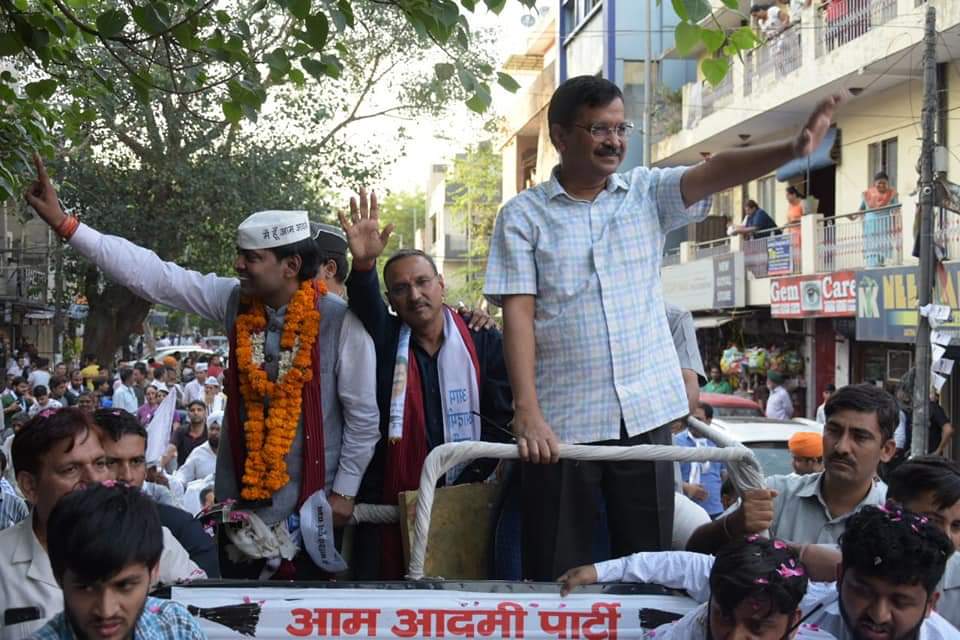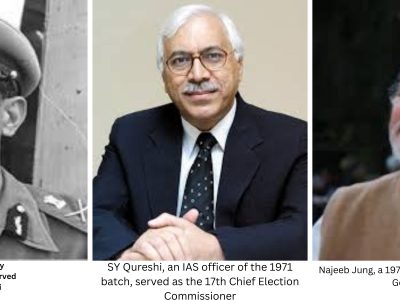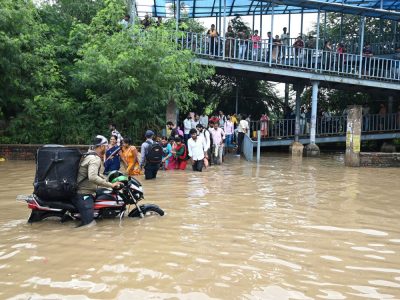An analysis of tweets by the BJP and the Congress shows a pattern of targeting a common enemy: Kejriwal. Whereas AAP has been publicising its achievements
This time around, the elections have provoked more than the usual share of slugfests between political foes. And the one platform which has helped them continue it – without the need for obtaining permissions for rallies, roadshows, or media interviews — is Twitter.
In Delhi, with voting having taken place on May 12, all the candidates need to do now is wait for May 23. And while the suspense builds up, we look at the Twitter handles of 21 leaders of the three main political parties here, and what kind of messages they posted over the last
two weeks of campaigning.
For starters, one gets the general impression that the BJP and Congress have a common enemy: the Aam Aadmi Party (AAP). Yet they are not united in this hatred: the two national parties have been everything but nice to each other. But the rhetoric against Kejriwal and his party is much more apparent in the Delhi campaign.
Maybe it boils down to the fact that maverick party AAP is a major threat to the older guns in Delhi politics. It was runner-up in all seven of the Lok Sabha seats in 2014 elections and made a spectacular showing in the 2015 Assembly polls, winning a whopping 67 seats from the 70 up for grabs.
To begin with, there’s Harsh Vardhan, the incumbent BJP MP who has prefixed his name with Chowkidar (all the sitting MPs of Delhi and the candidates have done the same). A Union minister, Vardhan attacks the constituency-specific manifesto that AAP has released. He called it a “jhooth ka pulinda”, (pile of lies) adding further that despite the 67 MLAs and three Rajya Sabha MPs, the party could not accomplish anything.
Vardhan also questions AAP’s stand on statehood, which is its main plank. He asks who is stopping Kejriwal from giving “savarno ke liye 10% arakshan” (10% reservation for upper cast poor) as for this, they didn’t need statehood. Vardhan’s rival in the Chandni Chowk seat from Congress, Jai Prakash Agarwal, also has a lot of things to say about Kejriwal.
The four-time MP tweeted that people need to be careful of AAP, whose “way of working” is “clear to everyone” in the last “four years”, adding that the “drama” would continue. This seems to be a pointer to Kejriwal’s tactics of protesting against the Centre’s apparent non-cooperation in the state.
Meenakshi Lekhi, on the other hand, focused on what the Kejriwal government had promised and what had been delivered, according to her.
AAP based its campaign on its success in improving state-run education, and Mohalla clinics as its backbone. Lekhi, the incumbent from New Delhi, questioned this with her retweet of BJP Delhi’s Twitter handle, which said: “From building 2 lakh toilets, free wi-fi, degree colleges to clean water as a right, the AAP government seems to have failed in almost all the promises it had made in its manifesto”. The tweet added in the end: #KejriwalCheatedDelhi.
Her colleague from North West Delhi constituency, Hans Raj Hans, was a little more hard-hitting, tweeting that the people of the state would now not believe the ‘lies’ of Kejriwal. Instead, he said the BJP would win all the seven seats and bring back Narendra Modi as prime minister.
Manoj Tiwari, the incumbent BJP MP from North East constituency, sounded more unscrupulous, accusing Kejriwal of supporting the “tukde tukde gang” and being ready to support the country’s betrayers. He also called Kejriwal a “threat” to the lives of people of Delhi.
The “tukde tukde gang” appellation, a jingoist term, has been coined to for Left-leaning students and intellectuals who are against BJP’s over-hyped nationalism. It helps project the notion of a country divided between nationals and anti-nationals.
Apart from this war of allegations and counter-allegations, there’s one running thread with the BJP candidates – the invocation of Modi’s name.
All the seven candidates from the BJP repeatedly tweeted, almost as if conceding that no work in the past five years had been carried by the incumbent MPs – to vote to bring back Modi. Most tweets ended with #ModiHaiToMumkinHai #ModiOnceMore! #PhirEkBaarModiSarkar #DeshBoleModiPhirSe #JitegaToModiHi
Ramesh Bidhuri, whose leadership in South Delhi constituency has been labelled as “gunda raj”, said that these elections were of two opposing ‘thoughts’. One, those who vote for Modi will do so because they want to make the country a superpower “again”. And those who won’t, because they back the idea of “Bharat ke tukde tukde”.
Then there’s Vardhan, who has a number of tweets which bank upon Modi’s authority to win the party votes. In one tweet he writes that every person’s “karam” is to go and vote, the “dharam” is to make Modi win.
Lekhi holds out a carrot, saying with “@narendramodi ji by our side, we will build the Delhi we promise!”
Her Twitter account comes to life sporadically, quite unlike that of Parvesh Singh Verma, BJP’s West Delhi MP and candidate, who keeps up a bombardment of tweets, reaching almost 50 on May 8. Dilip Pandey, AAP’s candidate from North East Delhi, puts out 60 tweets some days compared to his opponent, Sheila Dikshit who manages one or two tweets, if that.
The prospect of Modi making a comeback is also one that makes AAP and Congress reluctant friends. Even after the alliance talks broke down between the two parties, Kejriwal and South Delhi constituency candidate Raghav Chadha spoke in favour of backing any non-BJP party to see the ouster of “Modi and Amit Shah”.
What also unites the AAP and Congress on Twitter, and on the ground, is blaming the BJP for the sealing drive which affected many traders and factories. AAP’s Balbir Singh Jakhar, the candidate for the West Delhi seat, tweeted that the sealing had taken away lakhs of jobs.
He claims to have personally appeared for Mayapuri traders, and gotten a stay on the sealing order. “How can government sitting at Center (sic) allow agencies to seal running trades overnight without doing anything? Sealing snatched #employment instead Govt to provide more jobs”.
His party colleague Brijesh Goyal, fighting for the New Delhi seat which has seen a heavy burden of sealing, and impact from GST and demonetisation, says that “Draconian actions have affected the community”. He promises to “shut down the sealings” as soon he’s elected into power.
Goyal’s Congress rival Ajay Maken also railed against the sealing drive and kept raising the issues of GST and demonetisation. He said these actions had destroyed the trading business.
His party colleague, Rajesh Lilothia, fighting from the North West Delhi seat stressed on the unemployment caused by all the three measures. He assured the people that the Congress would free the poor from these oppressive measures.
Taken as a whole, a party’s Twitter handles reveal a pattern of campaign tactics. AAP promotes work done in the state in the past four years, the Congress party speaks about what it had done when it commanded power for 15 years under Sheila Dikshit. As for the BJP, one word says it all: Modi.
There is now a lull before the storm which will erupt on the day results come in.





